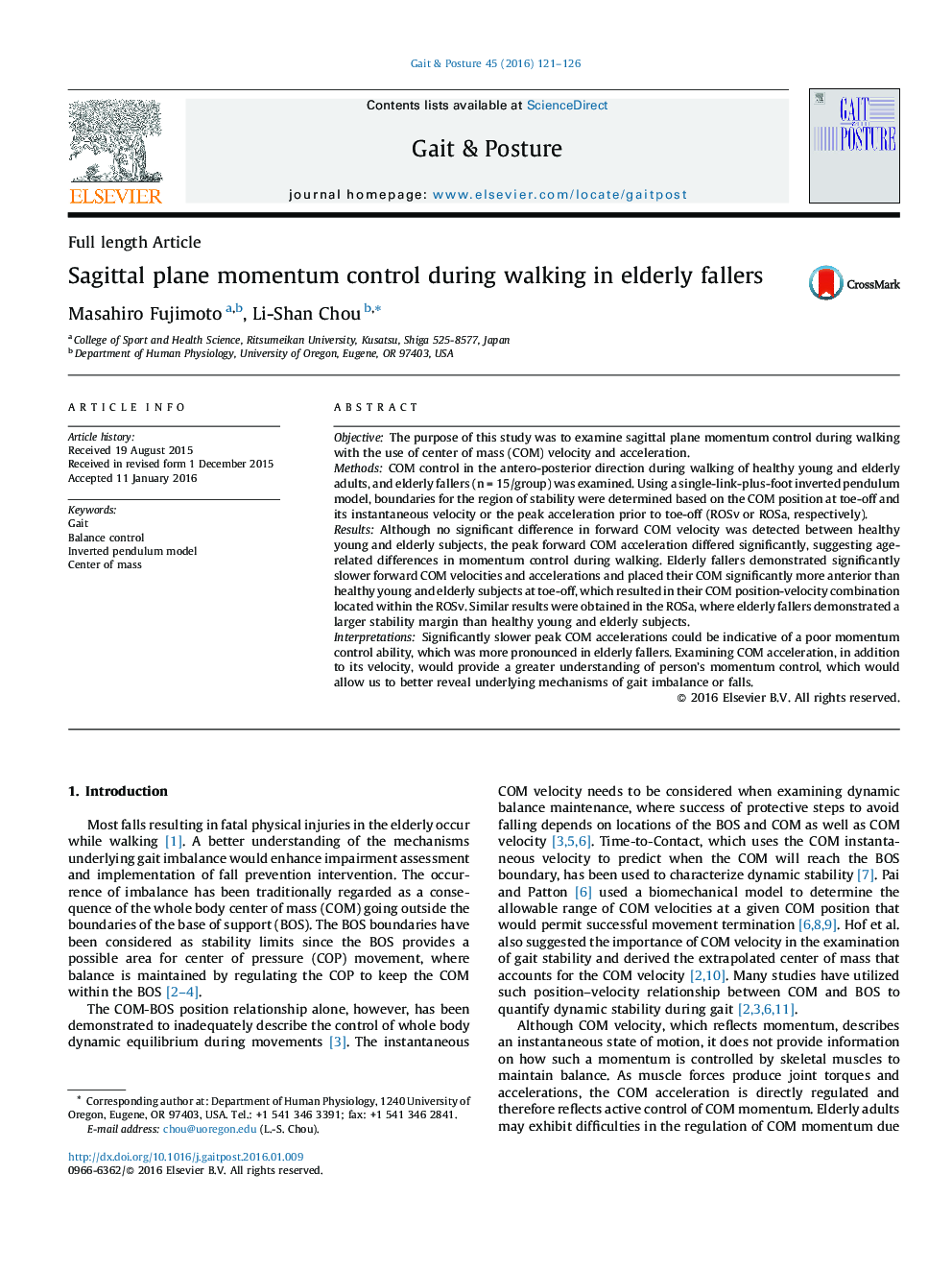| کد مقاله | کد نشریه | سال انتشار | مقاله انگلیسی | نسخه تمام متن |
|---|---|---|---|---|
| 4055993 | 1603850 | 2016 | 6 صفحه PDF | دانلود رایگان |
• We examined sagittal plane momentum control during walking.
• Regions of stability were defined using forward COM velocity and acceleration.
• COM acceleration differed even when no differences were found in COM velocity.
• Elderly fallers demonstrated the largest stability margins.
• Differences in stability margins were more pronounced when acceleration was used.
ObjectiveThe purpose of this study was to examine sagittal plane momentum control during walking with the use of center of mass (COM) velocity and acceleration.MethodsCOM control in the antero-posterior direction during walking of healthy young and elderly adults, and elderly fallers (n = 15/group) was examined. Using a single-link-plus-foot inverted pendulum model, boundaries for the region of stability were determined based on the COM position at toe-off and its instantaneous velocity or the peak acceleration prior to toe-off (ROSv or ROSa, respectively).ResultsAlthough no significant difference in forward COM velocity was detected between healthy young and elderly subjects, the peak forward COM acceleration differed significantly, suggesting age-related differences in momentum control during walking. Elderly fallers demonstrated significantly slower forward COM velocities and accelerations and placed their COM significantly more anterior than healthy young and elderly subjects at toe-off, which resulted in their COM position-velocity combination located within the ROSv. Similar results were obtained in the ROSa, where elderly fallers demonstrated a larger stability margin than healthy young and elderly subjects.InterpretationsSignificantly slower peak COM accelerations could be indicative of a poor momentum control ability, which was more pronounced in elderly fallers. Examining COM acceleration, in addition to its velocity, would provide a greater understanding of person's momentum control, which would allow us to better reveal underlying mechanisms of gait imbalance or falls.
Journal: Gait & Posture - Volume 45, March 2016, Pages 121–126
